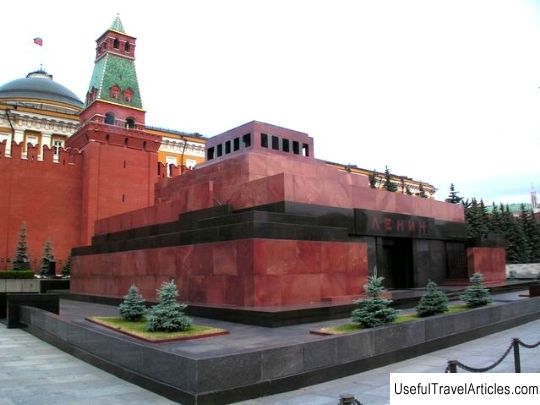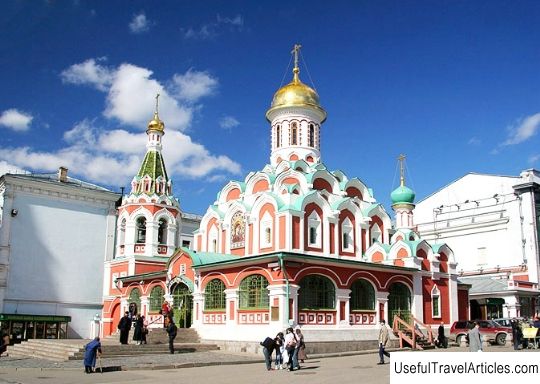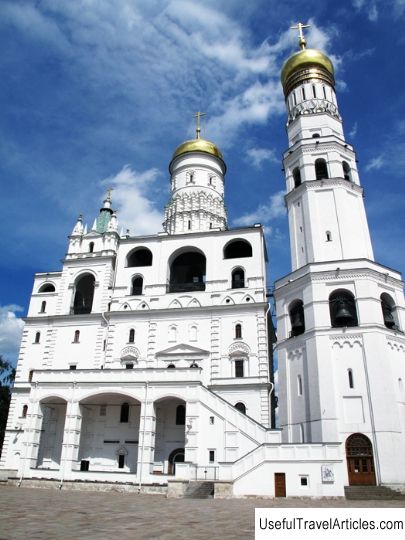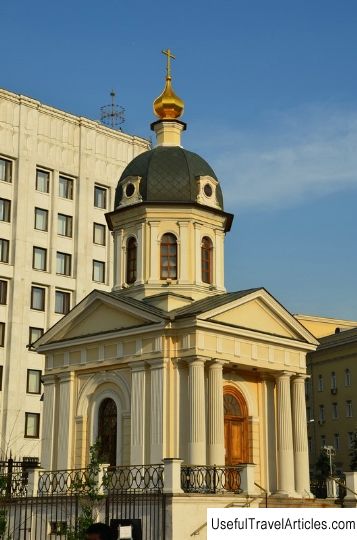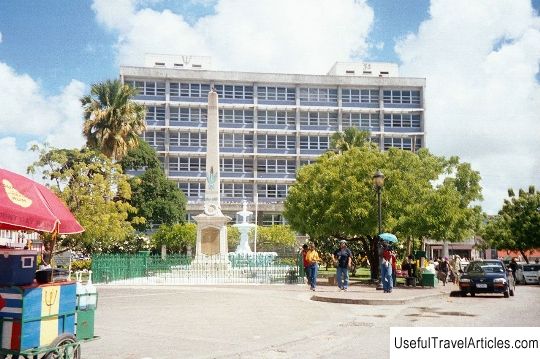Red Square description and photo - Russia - Moscow: Moscow
Rating: 8,6/10 (154 votes) 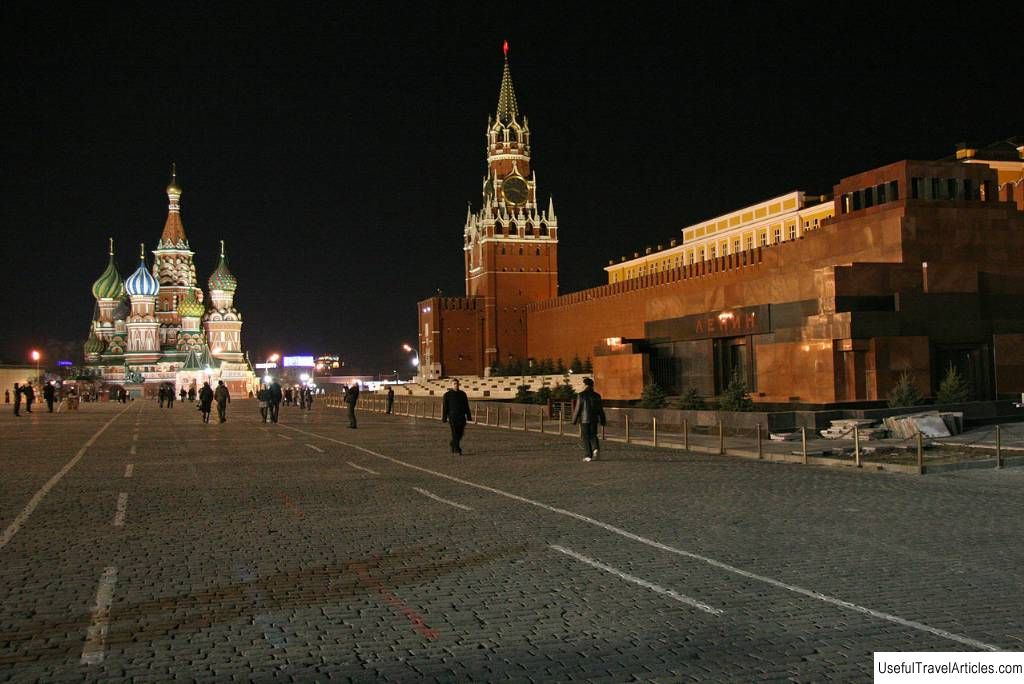
Red Square description and photos - Russia - Moscow: Moscow. Detailed information about the attraction. Description, photos and a map showing the nearest significant objects. Photo and descriptionMoscow's Red Square is the most recognizable landmark in Russia. The architectural ensemble of the square is a World Heritage Site and is under the protection of UNESCO. There is a monument to Minin and Pozharsky, Lobnoe mesto, a necropolis with burials of prominent people of the Soviet period and Lenin's Mausoleum. Red Square is an exclusively pedestrian zone, it is forbidden to drive cars, bicycles and mopeds. History of Red SquareThe history of the square begins in the late 15th - early 16th centuries during the reign of Ivan III, when the Kremlin was rebuilt, and the Great Posad with Torg was located on its north-eastern side. After a big fire in 1493, a large space between the Torg and the Kremlin walls burned out, and was left blank. At the beginning of the 16th century, a moat was dug and filled with water around the Kremlin, bridges were laid across it, there were river docks nearby, and the main streets of the city - Varvarka, Ilyinka and Nikolskaya led to the square, which made it an ideal place of trade ... They began to erect wooden houses and churches again, which were often demolished or simply burned out. This is where the first names of the square come from - Hollow Place or simply Fire. To restrict trade and leave the space open, wooden shopping arcades were built, and later, identical stone cells were erected in their place, connected into arcades. Ilyinka and Varvarka were divided into Upper, Middle and Lower trading rows. By decree of Tsar Alexei Mikhailovich, since the spring of 1661, the square officially changes its name and bears the name of Red, but it remains a trade. Towers and gates on Red Square In 1491, during the reign of Ivan III, the architect Peter Antonio Solario erected a tower on the site of the Frolov strelnitsa, which was renamed by the decree of Alexei Mikhailovich on April 16, 1658 into Spasskaya - after the icon that hung over its gate. From 1516, the tower could be accessed through a wooden drawbridge, which was replaced by a stone one in the 17th century. The Spassky Gate became the main entrance to the Kremlin. During the reconstruction in 1625, a clock with Slavic letters without hands was installed on the Spasskaya Tower, which during the reign of Peter I were replaced by German ones, and later - by English ones. Modern chimes were installed in 1851-1852. Interesting facts about the chimes of the Spasskaya Tower:
In 1533, the moat around the Kremlin was fenced off with thick battlements made of brick. In the Kremlin wall at that time there were three entrances to the square - Konstantino-Eleninsky, Spassky and Nikolsky gates. In 1535, the two-arch Resurrection Gates were built in the Kitay-Gorod wall, in 1680 they were supplemented by two towers and in this form they exist until their destruction in 1931 by the Bolsheviks. Churches and monuments The Intercession Cathedral on the Moat (St. Basil's Cathedral) is a complex of nine churches on one foundation, built in 1555-1561 by order of Ivan the Terrible in honor of the fall of Kazan and the conquest of the Kazan Khanate. In 1588, the relics of the holy fool Basil were placed in one of the chapels and the cathedral was consecrated in the name of Basil the Blessed. The cathedral was originally red-brick with white details. The currently existing in some places motley coloring of the cathedral belongs to the XVII-XVIII centuries. The vaulted outer galleries, encircling the side-chapels, and the bell tower were built in the second half of the 17th century. In Soviet times, the cathedral housed a museum, and divine services began to be held again in 1991. Under Ivan the Terrible the Execution Ground was built, from where the royal decrees were read. It is a round stone platform one meter high and 13 meters in diameter. The Execution Ground was never used as a scaffold, but in the Red Square there were repeated actions of intimidation during the reign of Peter I, such as the execution of the archers in 1698. In 1804 the square was paved with stones, in 1813 the moat was filled up and trees were planted in its place. In 1818, the only sculptural monument on the square was erected - to Minin and Pozharsky. And in 1892 the square was illuminated with electric lanterns. In 1929-1936, the Kazan Cathedral and the Iverskaya chapel with the Resurrection Gate were completely demolished. interfered with military parades. The Iberian chapel was previously plundered, precious salaries were stolen and paraphernalia burned. The Cathedral of St. Basil the Blessed still survived. In the 70s of the twentieth century, the foundation of the square was reconstructed, the ancient paving stones were replaced with Crimean dolomite. In the 1990s, the Kazan Cathedral was completely restored, in 1994 the foundation stone of the Iverskaya Chapel and the Resurrection Gate was consecrated, and in 1995 they were opened. Shopping arcade From 1702 to 1737, the first public theater in Russia was located near the Nikolsky Gate, which was later destroyed by fire. The Provincial Board was erected near the old mint. At the end of the 18th century, the shopping arcade was rebuilt. The GUM building was built in the 10s of the XIX century, after the famous Moscow fire, by the architect O. Bove. Half a century later it was rebuilt. This is a building with three aisles (passages), where numerous shops and boutiques are located on three floors. The glass roof and the fountain serve as an additional decoration. Interesting facts about GUM:
Museums on Red Square In place of Zemsky order in 1874-1883, the Imperial Historical Museum was built according to the project of the artist V. Sherwood and engineer A. Semenov. This dark red brick building is richly decorated with turrets and cornices, and the interior is decorated with frescoes and bas-reliefs. Until 1917, the collection of the Historical Museum was replenished mainly with exhibits from private collections. Currently, exhibits come here from archaeological expeditions, from private donors and through official purchases. The Lenin Mausoleum is also a museum. In the beginning it was a wooden building, in 1930 a stone mausoleum was built. Here since 1924 the body of Vladimir Lenin is kept in a transparent sarcophagus. The mausoleum was built by the architect. A.V. Shchuseva. Repeated attempts were made to destroy the sarcophagus: a hammer, stones, a sledgehammer were thrown into it, they tried to smash it with their feet, and even planted explosives. Cases of throwing rolls of toilet paper, brochures, as well as spilling ink and sprinkling with holy water have been recorded. Red Square and the Kremlin are included in the UNESCO World Heritage List. Concerts, festivities and parades are currently organized on Red Square. In winter, a skating rink is flooded here. Note:
|












